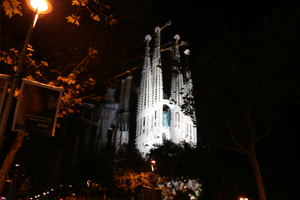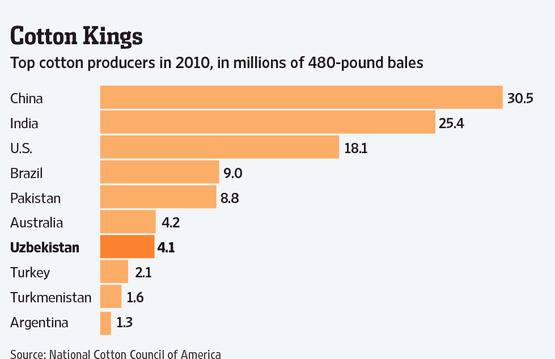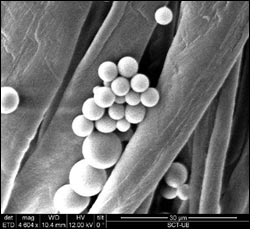|
Without a doubt, savings in energy, water and raw materials were the key drivers for the machine and process innovations on show at this year's ITMA in Barcelona.
ACIMIT launched its new Green Label at the show, while the VDMA introduced its Bluecompetence initiative for ecological design and energy efficiency. As the editor of Sustainable Nonwovens, I was cheered to speak to many nonwovens machinery companies reporting notable success - and especially those dealing in technologies for recycling and the conversion of alternative natural fibres and waste products, such as Italy's Bematic, Bombi and Cormatex, along with Laroche of France.
A full Dilo nonwoven line with a width of 3.5 metres was in operation, consisting of two bale openers, a MultiCard, a DLSC crosslapper and needleloom, with new innovation including the Profiline CV1A web compensation system. A high potential for fibre savings along with low energy consumption are key characteristics of this line. Designed for very economic web forming and needling, it also allows for reduced maintenance and cleaning and easy operation, while being capable of speeds of up to 160 metres a minute.
The new Tr¨¹tzschler Nonwovens Streamliner drum dryer is another energy saving development from Germany, achieving much higher specific evaporation capacities than has previously been possible. "The Streamliner's optimised airflow with minimal pressure loss is combined with an optimised fresh air based on temperature-dependent density changes," explains marketing manager Eric Schinnerling. "This and the advanced heating system ensure an optimised flow technology, while energy efficiency can be further increased by external air treatment and heat exchange."
Oerlikon's Virtual Showroom provided a complete overview of the extrusion spinning process via extraordinary 3D graphics, taking you right into the heart of the technology and providing views it's not even possible to achieve with the actual machine. Such technology promises even more spectacle at future ITMAs. With a 65% market share, Oerlikon Neumag is the leading global supplier of systems for, for example, BCF carpet yarn, and its latest S+ brings together all the benefits of previous technologies. Optimisation measures, however, mean production speeds can be dramatically increased. Finding the niches that huge operations like Oerlikon can't really fill, meanwhile, is the UK's own Fibre Extrusion Technology (FET). FET has a track record in the field of bicomponent and tricomponent meltspinning and has also adapted the meltblowing nonwoven process specifically for biomedical applications. This has led to the production of resorbable nonwovens for the first time, and the technology is proving capable of processing other high end polymers for technical and functional nonwoven material applications. innovationintextiles |
|
Attending to consumption at ITMA
Updated: 2011-11-2 Source: innovationintextiles

Recommended News
Photo Gallery
Most Popular
 ACIMIT and the VDMA - as the respective textile machinery trade associations for Italy and Germany - were by no means unique in emphasising the ability of their member companies to develop processes and technologies that provide a low environmental impact.
ACIMIT and the VDMA - as the respective textile machinery trade associations for Italy and Germany - were by no means unique in emphasising the ability of their member companies to develop processes and technologies that provide a low environmental impact. As far as Germany is concerned, in a dominant position in Hall 2 at the show was Dilo - a company always keen to showcase the excellence of the country's engineering at ITMA shows.
As far as Germany is concerned, in a dominant position in Hall 2 at the show was Dilo - a company always keen to showcase the excellence of the country's engineering at ITMA shows. Another German company, Monforts, reports increasing success with technical textile and nonwovens manufacturers. Its new Montex 8000 stenter has an ¡®intelligent' heat recovery module which can adjust the exhaust air volume and air temperature to ensure it is always working at its highest efficiency.
Another German company, Monforts, reports increasing success with technical textile and nonwovens manufacturers. Its new Montex 8000 stenter has an ¡®intelligent' heat recovery module which can adjust the exhaust air volume and air temperature to ensure it is always working at its highest efficiency. On today's advanced standard-width spunlacing lines for nonwovens such as wipes, the company has calculated that as a result of the 30% less energy that this dryer makes possible, average savings of €410,000 a year can be achieved.
On today's advanced standard-width spunlacing lines for nonwovens such as wipes, the company has calculated that as a result of the 30% less energy that this dryer makes possible, average savings of €410,000 a year can be achieved.


